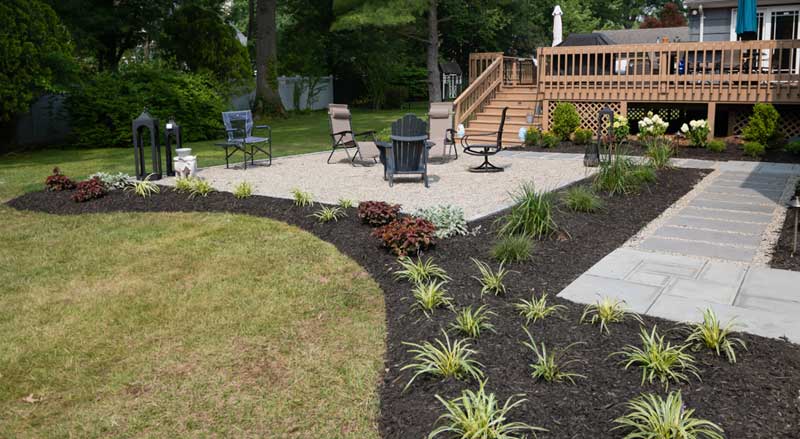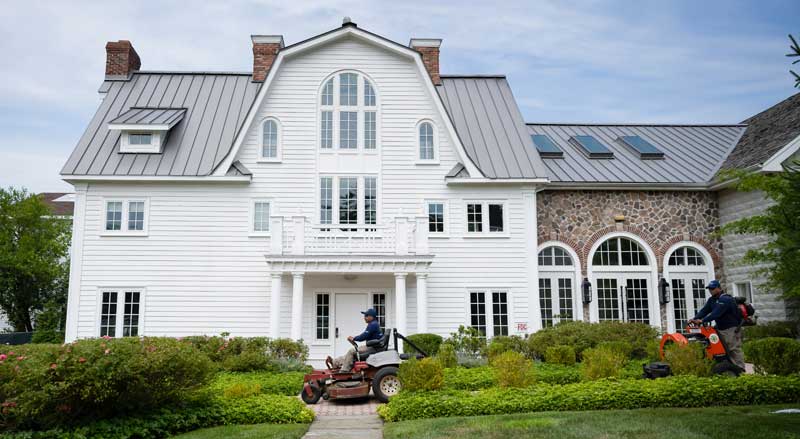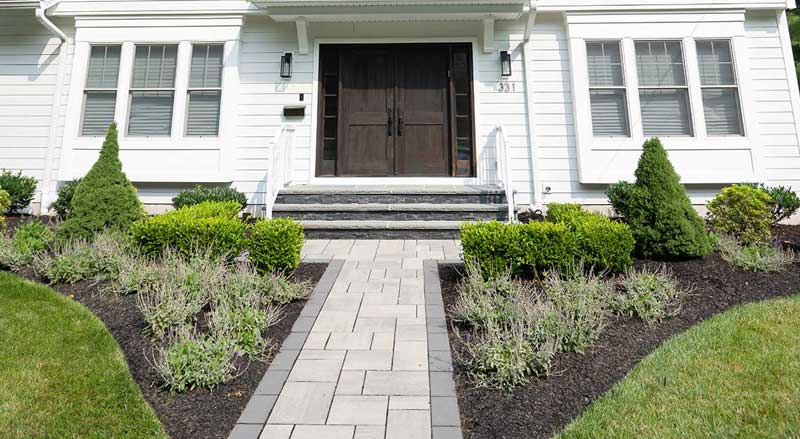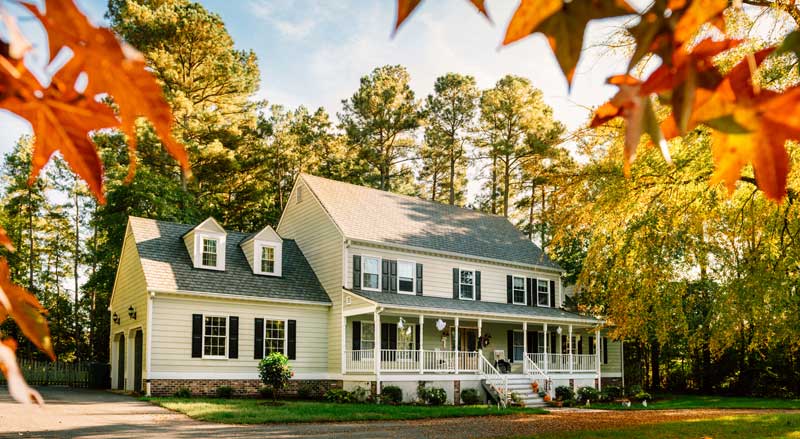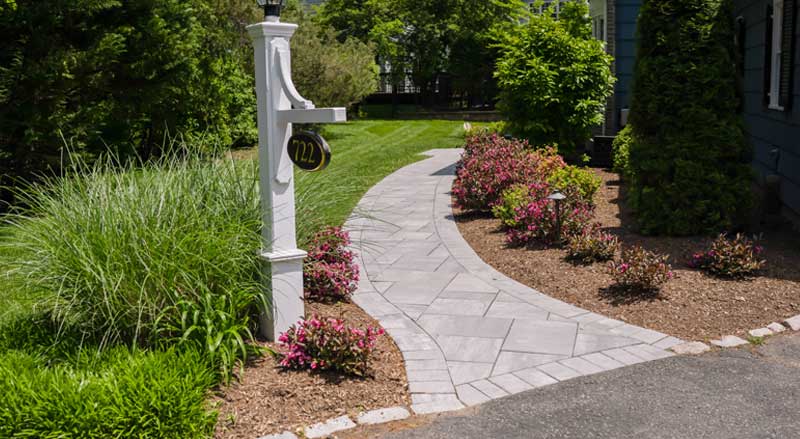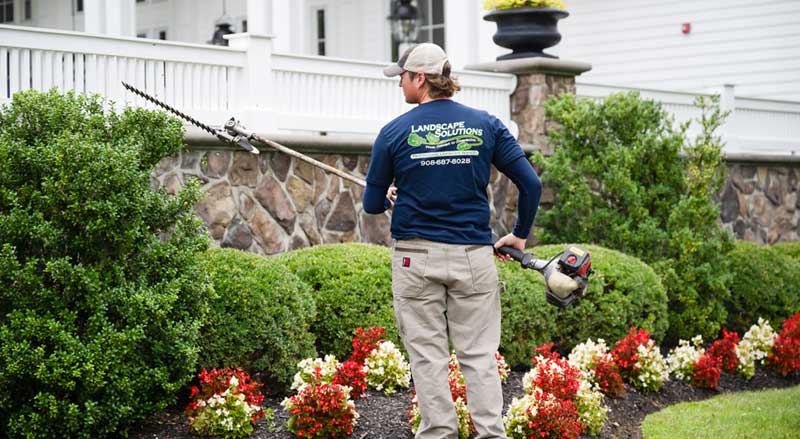You fell in love with your home, in part because of its outstanding curb appeal and inviting yard. But that was a while ago. If your landscape needs a facelift, now is the time to act—September and October are ideal for landscape renovation!
Landscape renovation can be as basic or as elaborate as you want it to be. Maybe you simply want to renovate your lawn and add some plantings. Or perhaps you want to add a new multi-level patio, flower beds, and a complete outdoor kitchen.
In either case, don’t wait until spring for your landscape renovation to start. Now is the time to turn your landscape dreams into reality.
Have a Plan
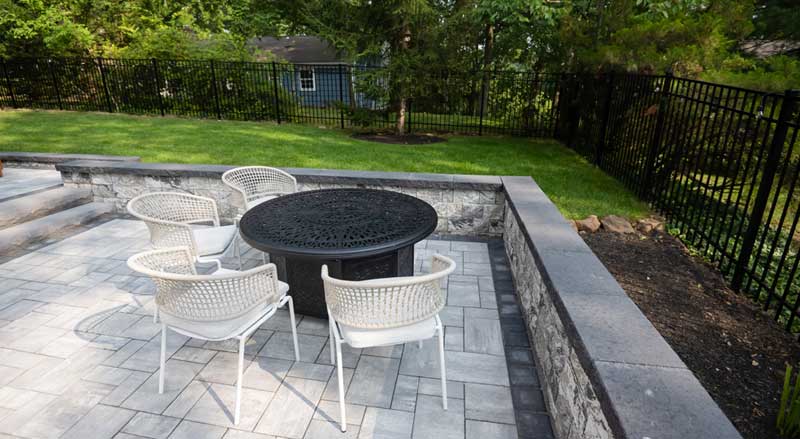
There’s no need to complete your entire landscape renovation at once. Many people prefer to renovate in phases.
But, you need a master plan for your landscape design to know the exact layout of your future landscape. You don’t want to plant perennials where your new patio will be.
The plan should show locations for all hardscaping features, plantings, and new utility lines. Use a landscape architect to design an area that’s perfect for your family and lifestyle.
For some help and inspiration see our tips on planning your outdoor space.
Hardscaping
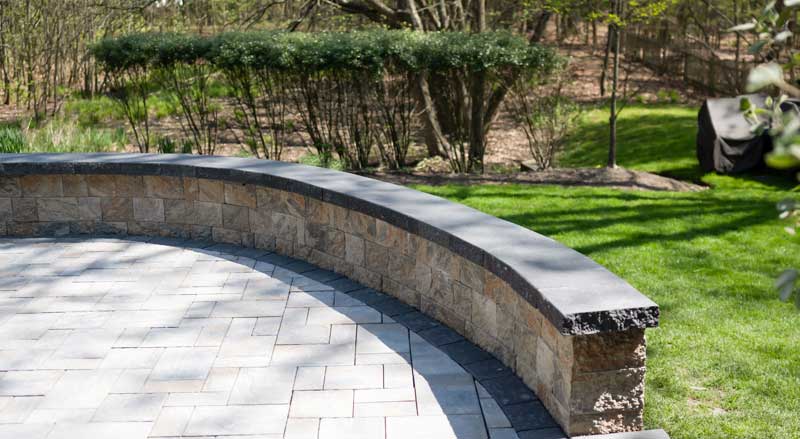
The early fall months are perfect for certain hardscaping installations such as a new patio or firepit. In Northeastern states like New Jersey, the weather is cooler and working outside is invigorating. The ground is drier, and many plants have gone dormant.
If you experience cold winters, only take on projects that can be completed before the ground freezes.
Some larger projects, like an elaborate outdoor kitchen with all the amenities, can take a while to compete. In a case like this, you might want to wait until spring. But you should plan now and get scheduled with a landscaper in advance.
Since hardscaping elements are the truly permanent features of your property, try to use durable materials like natural stone or brick.
Lawn Renovation in September and October
If you live in the Northeast, September is the best month to plan for a lush spring lawn.
The outdoor temperatures are cooler but remain warm enough to support healthy lawn growth. And grass seedlings love the warm soil matched with cool nights.
Lawn renovation takes some work, including:
- Aeration
- Planting new grass/over-seeding
- Mowing
- Weeding
- Fertilizing
- Watering/adding an irrigation system
But enjoying your lawn next spring will make it all worthwhile.
Aeration
Lawn aeration helps your grass breathe and grow! The process creates many small holes in the lawn, allowing nutrients, water, and oxygen to better reach the grass’ roots.
Aeration also breaks up soil compaction, reduces thatch, and helps grass roots grow deeper into the soil. It’s exactly what your tired lawn needs after the hot summer.
Aerate first before seeding or fertilization.
Planting New Grass

Once leaves begin to fall, it may be too late for seeds to germinate. So, plant grass in September.
Newly germinated grass seeds have a tough time in the summer heat. But grass planted in the early fall has time to establish growth and store energy for the winter dormancy period. When spring arrives, the seedlings are ready for top-growth and to prepare for the hot summer months.
Overseeding
Does your lawn have ugly bare spots? This is common after a dry, hot summer—your grass has taken a true beating! But it doesn’t mean your whole lawn needs to be reseeded. You can simply overseed for a denser and greener lawn.
Overseeding is putting grass seed over the existing lawn while leaving the lawn intact.
Mowing
Continue to mow your lawn, even though grass growth has slowed. Many landscapers recommend that you only cut grass blades down to two-thirds of their existing height.
Weeding
After the summer, your lawn may look like a haven for weeds. Weeds grow quickly and can easily get out of control—especially if the hot weather kept you from weeding.
Weed in the fall to keep weeds from strengthening in the winter and returning in the spring. And weed before you fertilize and make your garden weeds even healthier!
Fertilizing
September and October are the times to fertilize—especially if you fertilize once a year. The lawn will establish stronger root systems and better survive the winter. Here are lawn fertilization tips.
Water and Irrigation Systems
New seeds and seedlings need frequent watering. Keep the soil looking dark and wet, but don’t overwater. On warmer fall days, you may need to water several times a day.
The fall is a good time to install a new irrigation system to provide optimal watering for your lawn and plants.
Plants
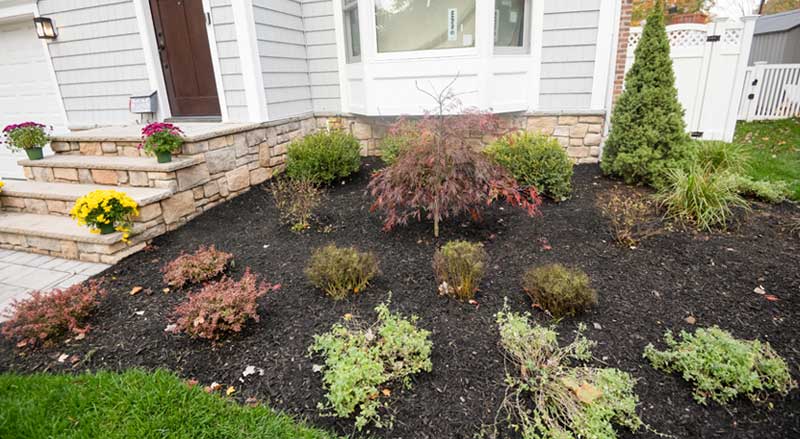
Plants can’t stay healthy and beautiful in your garden forever. Remove and replace older plants in the fall. Remove annuals to keep flower beds pest and mold free.
Again, fall is the best time to plant perennials, bulbs, bushes, and trees.
In the fall, plants are all about root development—not top growth. Then in the spring, your perennials will be established enough to show off their colorful blooms.
Here’s why fall is a great time to plant shrubs and trees.
Trees
Autumn is an important time for tree care. Leaves fall and expose tree diseases and weak limbs.
A tree expert or an experienced landscaper will let you know if removal, pruning, or disease treatment is needed.
Mulch
Place mulch around trees, shrubs, and flowerbeds to protect roots from weeds, snow, and freezing temperatures. Mulch will keep the soil temperature more regulated and help the soil retain moisture.
Regrading property and installation of a drainage system will fix drainage problems, improve water flow, and even protect your home.
Landscapers can regrade property to improve its appearance or make it more functional.
Landscape Solutions offers superior landscape design and lawn renovation. Contact us today.

